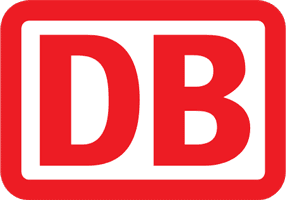
“For Deutsche Bahn Digital Sales, SAFe is the framework for the strategic digitalization program … With it, we are delivering faster and more effectively on our objectives, which drives our ability to compete in the digital age.”
—Matthias Opitz, Senior Program Manager, DB Vertrieb, Deutsche Bahn
Challenge:
After privatizing the company, Deutsche Bahn faced new market forces, along with increasing competition from new transportation players.
Industry:
Transportation
Results:
- Lead time dropped from 12 months to 3-4 months
- Coverage of test automation improved from 30% or less to 80-90%
- Greater collaboration among teams and better results have raised employees’ satisfaction levels
Best Practices:
- Start ASAP – Begin, even if imperfectly. “It’s more important to give people a chance to work in this environment than to wait until everyone is trained,” said Thorsten Janning, SAFe Fellow, of KEGON.
- Train extensively – That said, train management and teams as much as possible before the first PI Planning event.
- Get expert help – DB worked with Scaled Agile Partner, KEGON, from the start and continues to do so for the support and experienced guidance a partner can bring. Progress is a continuous process of asking questions, which a partner can help answer.
The partner that made it happen:

Introduction
In recent years, Deutsche Bahn (DB)—one of Europe’s largest railway operators—has faced unprecedented change. In 1994, the two railways of East and West Germany merged after the country’s reunification. While the company was adjusting to the Lean-agile transition, it was also contending with rising costs and greater competition than ever before from other railway operators, long-distance bus services and new, fast-acting players providing ride services and car-sharing.

Within this challenging environment, in 2014 DB embarked on a digital transformation to modernize the way their business units operate, from cargo transport to passenger ticket sales. It was up to each business unit to decide on a path forward to meet those goals.
Initially, the business units implemented Lean-Agile practices at the team level, on a small scope. Yet as they began trying to deliver on objectives, they fell short of targets—especially on larger solutions. The company struggled with lengthy decision cycles; fragmented responsibility; constant design, coordination and estimation; changing requirements; and many, many dependencies.
“In nearly every business unit, the transformation projects struggled to deliver large solutions,” said Matthias Opitz, Senior Program Manager, DB Vertrieb. “We were going around in circles analyzing, and the processes were so complex that the organization was not able to deliver simple minimum viable products.”
It was clear the effort would require a considerable overhaul of its long-established ways of working.
Full-Speed Ahead in DB Cargo
The company looked for a Lean-Agile methodology capable of handling its complex environment on a larger scale and found it in the Scaled Agile Framework® (SAFe®).
Within each segment of the company, at least one business unit rolled SAFe out as part of the digital transformation initiative:
- DB Cargo: Freight transportation and Logistics
- DB Netze: Infrastructure/rail network
- DB Vertrieb: Passenger transport
“For Deutsche Bahn Digital Sales, SAFe is the framework for the strategic digitalization program,” Opitz said. “It brought a continuous delivery process that keeps us on track toward our objectives.”
DB Vertrieb started its Lean-Agile transformation in 2015, when the business unit established an effort named ‘KAI‘ (an acronym for the German words meaning customer centricity, agility, and innovation), which stressed five attributes:
- Customer excitement over optimization of profits
- Iteration over perfection
- Participation over hierarchy and silos
- Trust and personal responsibility over top-down
- Active participation instead of business as usual
To ease the transition, the company engaged Scaled Agile Partner KEGON as its primary provider for training and coaching. With KEGON, the DB companies began comprehensive training to prepare everyone who would be joining an Agile Release Train (ART), a team of teams in the Framework.
Lean-Agile leaders at DB Cargo and DB Vertrieb took the Leading SAFe® course, with others taking role-based training such as SAFe® Scrum Master, SAFe® for Teams, and SAFe® Product Owner/Product Manager. At least nine change agents at DB business units also earned SAFe® Program Consultant (SPC) certification in order to teach their colleagues. DB saw training as essential for helping people through the inevitable challenges that would come up, including resistance.
“Training was very important for giving us confidence and answers to questions that came up,” Opitz said. “Because we trained all participants, training also helped open discussions and convince skeptical people that this was the right way to go.”
Delivering on All Commitments
DB Cargo was the first division within the company to kick off the first ART with a Program Increment (PI) planning event. Managers of the other business units attended only to observe.
In that meeting, they accomplished several of their top objectives:
- Clarified an incremental release strategy
- Identified business epics regarding end-to-end processes
- Prioritized business epics with weighted shortest job first (WSJF)
- Analyzed business epics and identified features
- Figured out dependencies and planned teams’ work for the coming PI

SAFe practices such as the Program Board gave participants clear insight, for the first time, into the company’s numerous dependencies. With that visual aid, they realized that changes to peripheral systems would affect the critical path of the initiative, allowing teams to coordinate appropriately.
As the PI got underway, leaders and team members alike hit challenges with breaking old habits. The governance and budgeting structures remained in a waterfall construct early on, but began to move toward Lean budgeting as DB Vertrieb kicked off PIs in 2017.
To bridge this gap, Opitz stresses that the business units had to ensure that SAFe and the new approach extended to the broader organization, beyond IT. Therefore, DB Vertrieb decided to establish a ‘Target Operating Model’ (TOM) for the business unit and to perform the transformation activities in a dedicated ART. Shared services departments such as HR, controlling, communication, training
and support, and marketing were brought into the fold.
Any doubt or resistance soon faded away as teams delivered perfectly on target for their first PI. “At first, everyone looked at the committed backlog and said, ‘It’s too much,’” Opitz said. “But by the end of this first PI, we had delivered almost everything, which was a surprise to everyone.”
With SAFe, DB Vertrieb finally implemented a process by which to plan requirements, prioritize, and synchronize the various programs, and to break down the requirements and epics into features and stories. Additionally, automated epic and feature reporting brought critical transparency regarding implementation status.
“Just a year ago, it was a big challenge to do specifications,” Opitz said. “Now we have a process that makes it happen.”
Steps to Success
A number of steps and factors contributed to DB Vertrieb’s SAFe transformation. For one, DB leveraged Agile metrics to manage Portfolios and ARTs, and to help secure funding for them. In turn, management supported the effort by funding standing teams. They also invested in co-located and synchronous PI planning events for all ARTs in 2019.

The company performed a Value Stream analysis, which resulted in four Value Streams covering vertical products and horizontal services.
Toward continuous improvement of testing, teams performed system tests and implemented integrated development test servers.
Starting at the Portfolio level, they switched from a traditional requirements specification process to Agile requirements engineering.
DB Vertrieb found that self-organized teams were empowered to make decisions. In one case, a team detected an incorrect architectural decision when communicating with a stakeholder.
